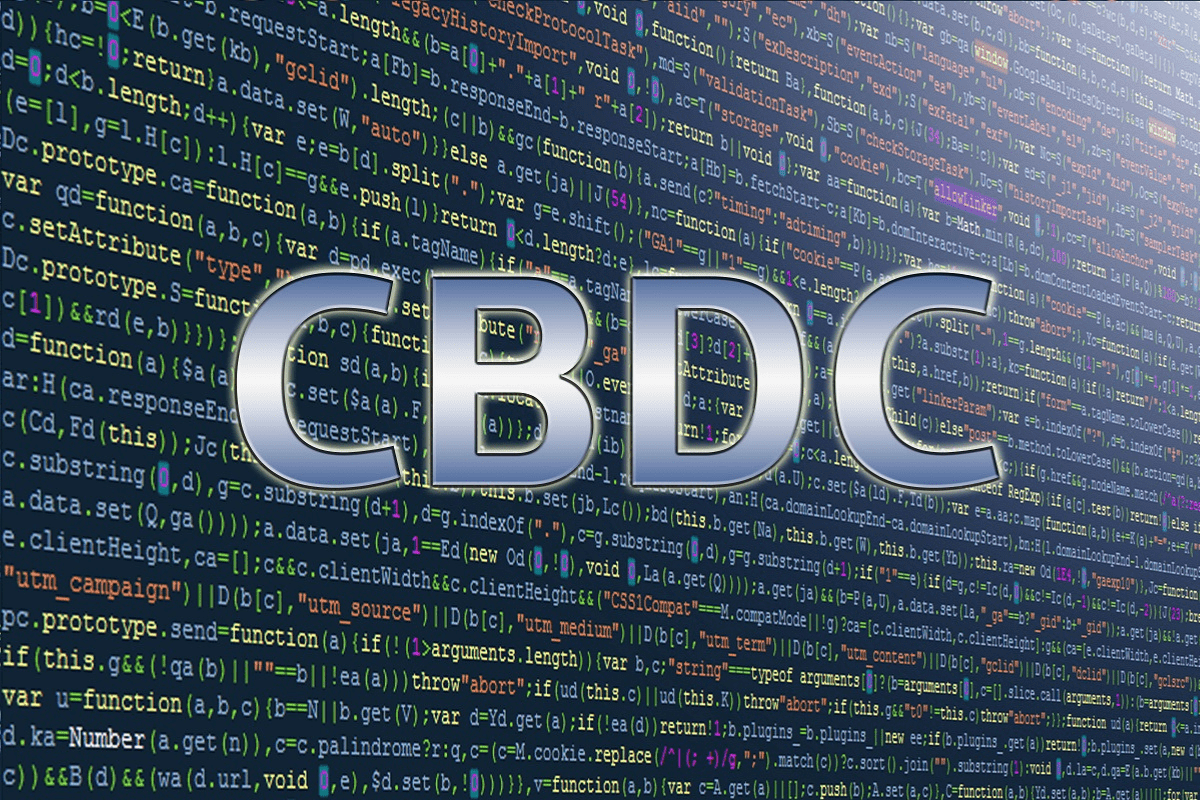Top 10 Countries Experimenting With Central Bank Digital Currency
- April 15, 2021
- Jennifer Moore

The economic and political rationale concerning the issuance of Central Bank Digital Currencies can vary notably as per jurisdiction. Declining a global pandemic, cash usage along with the desire to manage with additional Central banks accelerated Central Bank Digital Currency research in Nations that earlier had no strong stance on Central Bank Digital Currencies before a year.
Apart from that, some Central Bank Digital Currencies failed to gain traction due to minimal trust in the government. Concerning the situation, numerous nations are eyeing Central Bank Digital Currencies for skirting sanctions or manage from additional countries.
Nations and Their Endeavours to CBDC
Countries sanctioned by the United States, including Cuba and Iran, happen to be devoting notable technical resources for developing their own Central Bank Digital Currencies. On the other hand, Palestine aims to issue a Central Bank Digital Currency for circumventing Israel’s control. Along the same lines, the Lebanese government is claiming that the profound ties between the government and the bank lead to low public trust, thereby leading to an approximated $10000000 stored in homes rather than banks.
A Lebanese CBDC developed upon transparency would likely restore confidence within the banking sector. It happens to be one of the central purposes of Central Bank Digital Currency – to assure confidence in the monetary system. Here is an updated list of nations experimenting with their CBDC projects.
1. Sweden
In March 2017, the Swedish Riksbank took a leap with its CBDC project known as the e-krona. A pilot remains represented from 2020 till February 2021. Ultimately, the Riksbank determines whether to proceed with announcing a CBDC. The initial concentration will remain on a non-interest-bearing Central Bank Digital Currency. The plan aims to assure prompt payments, plus offline usability remains observed within the project. As far as anonymity is concerned, the Riksbank indicates that anonymous payments exclusively would remain with regulation if e-krona transactions happen to be occurring peer-to-peer.
Also Read: Can Central Banks Be Taken Over By Digital Currencies?
The Riksbank originally anticipated threats concerning financial stability. It is in the form of low robust payment systems as profit-oriented private organizations do not consider sophisticated measures for ensuring the operationality of the payment systems during times of crisis. In this case, a Central Bank Digital Currency would provide a strong alternative during the cases of turmoil or crisis of private payment service providers, hence making sure about the stability of the whole Swedish payment system.
2. The Bahamas
During 2017, the central bank of Bahamas came forward with the sand dollar, CBDC, looking forward to streamlining and modernizing the financial system of the country, thereby reducing service delivery charges and enhancing transactional efficiency, hence improving financial inclusion.
The sand dollar happens to be supporting 1:1 to the Bahamian dollar. This, in turn, remains pegged to the United States dollar. After a successful pilot launch on the Island conglomeration concerning Exuma, the sand dollar turned out to become the first-ever CBDC in the world, thereby successfully transitioning beyond the pilot stage, hence achieving its official launch in October last year. Later, the central bank announced that the sand dollar happens to be expected to attain full interoperability within its numerous wallet providers within a week, as of March 26, 2021.
3. European Union
The European Central Bank (ECB) has additionally explored revealing a Central Bank Digital Currency. They are arguing that it may turn out to be a measure to adapt to the digitization of the worldwide economy. Similarly, the European Central Bank has stated that it might issue a Central Bank Digital Currency if foreign Central Bank Digital Currencies or private digital payments widely happened to be adopted within Europe.
The European Central Bank has also stated that the Central Bank Digital Currency infrastructure could be decentralized or centralized, hence potentially using DLT. Moreover, the European Central Bank aims to consider whether or not it should start a Central Bank Digital Currency project around mid-2021.
4. China
Possibly, the most evident Central Bank Digital Currency project being incorporated during this time happens to be China’s digital renminbi. It can also be considered as the Digital Currency/Electronic Payments (DCEP) initiative. It was within trials and happens to be working towards a planned release.
China has been working on the project since 2014 and has successfully positioned its development as a direct challenge to the worldwide dominance of the United States dollar. While the project details still happen to be emerging, according to reports, it is likely to utilize distributed ledger Technology there and then think to replace cash in circulation. Moreover, with the help of digital wallets.
5. Bahrain
Bahrain’s Central Bank shifted from the initial stages of analyzing a Central Bank Digital Currency in 2018 to carry out research on the potential chances of launching the online version of its currency – the Bahraini Dinar. During the initial phases of 2020, the central bank of Bahrain announced that they would pilot the Central Bank Digital Currency policy-maker tool kit created by the world economic forum, as a part of the governor’s research on the influence of digital currencies on the economy.
6. Eswatini
Eswatini is a landlocked nation in South Africa, earlier named Swaziland. In 2019, Eswatini’s Central Bank carried out A4 face diagnostic research. For investigating possible use cases concerning a Central Bank Digital Currency implementation.
Also Read: Arbitrage Trading: It’s Not As Difficult As You Think
7. Estonia
The e-residency program of Estonia allows nationals from abroad to apply for Estonian Digital ID, thereby gaining Digital service access. It is done to research how suitable the core technology is.
8. France
In December 2020, the Bank of France experimented with CBDC successfully. In July 2020, the bank of France has chosen eight applicants for experimenting with a digital Madre concerning interbank settlements.
9. Japan
In October 2020 the bank of Japan announced its approach to Central Bank Digital Currency. It revealed that it is likely to launch a Central Bank Digital Currency feasibility study in April 2021.
10. Indonesia
In 2021, the bank of Indonesia is concentrating on the idea of developing a rupiah-denominated digital currency. However, stakeholders of Indonesia have stated to the Jakarta Post that this plan has a long way to go.
Final Remarks
Day by day, more and more banks happen to be showing interest in CBDCs. The above pioneer projects receive motivation from numerous reasons, backed by several motivating factors.
Categories
- AI (6)
- Altcoins (10)
- Banking (10)
- Bitcoin (132)
- Bitcoin ETF (11)
- Bitcoin Price (30)
- Blockchain (47)
- Brokering World Hunger Away (16)
- Business (7)
- CBDC (11)
- COVID-19 (3)
- Crypto ATMs (1)
- Crypto Banking (15)
- Crypto Bill (1)
- Crypto broker platform (26)
- Crypto Investment (3)
- Crypto Markets (3)
- Crypto Payment (26)
- Crypto Prices (1)
- Crypto Trading (88)
- Cryptocurrency (360)
- Cryptocurrency Exchange (94)
- Data Visualization (2)
- Decentralized Finance (7)
- DeFi Payment (9)
- DEX (3)
- Digital Currency (22)
- Ethereum (1)
- FAQ (6)
- Finance (24)
- Financial Equality (4)
- Financial Freedom (8)
- Forex (24)
- ICO (1)
- Investment (11)
- Mining (3)
- News (63)
- NFTs (2)
- P2P (1)
- PayBitoPro (599)
- PayBitoPro Coin Listing (6)
- PayBitoPro Exchange (2)
- Post COVID Digital Transformation (1)
- Press Release (130)
- Privacy & Security (3)
- Real Estate (1)
- Stablecoin (4)
- Technology (14)
- Uncategorized (2)
- US Presidential Election (2)
- Utility Coin (1)
- Web3 Wallets (1)
- White Label Crypto Broker Solution (1)
- White Label Crypto Exchange (6)





